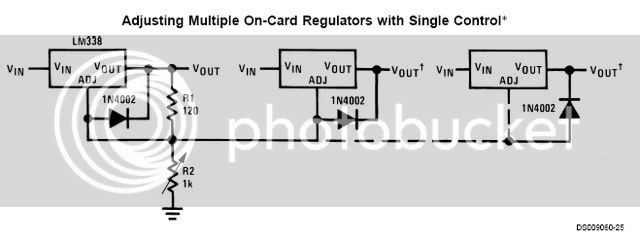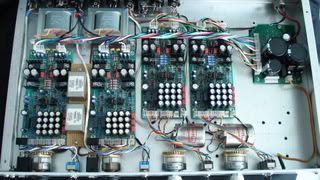I'm building several mic pre's in one case, each powered at +18v...(each with one THAT1510, and 1646 per board.)
The power transformer will be in the same box.
I've never wired for "on-card" regulators, so I was wondering...
First of all....are there any real benefits ?
If so, should I....
1) Pre-regulate...Use a transformer, and a regulator circuit with high enough volts/amps to account for the dropout of the smaller regulators that will be "on card" ?
2) Use only a transformer/rectifier/filter caps (accounting for dropout downstream)...and send that unregulated DC to each card's regulator(s) ?
3) Use a method such as this.....?

=FB=
The power transformer will be in the same box.
I've never wired for "on-card" regulators, so I was wondering...
First of all....are there any real benefits ?
If so, should I....
1) Pre-regulate...Use a transformer, and a regulator circuit with high enough volts/amps to account for the dropout of the smaller regulators that will be "on card" ?
2) Use only a transformer/rectifier/filter caps (accounting for dropout downstream)...and send that unregulated DC to each card's regulator(s) ?
3) Use a method such as this.....?

=FB=



























![Soldering Iron Kit, 120W LED Digital Advanced Solder Iron Soldering Gun kit, 110V Welding Tools, Smart Temperature Control [356℉-932℉], Extra 5pcs Tips, Auto Sleep, Temp Calibration, Orange](https://m.media-amazon.com/images/I/51sFKu9SdeL._SL500_.jpg)






